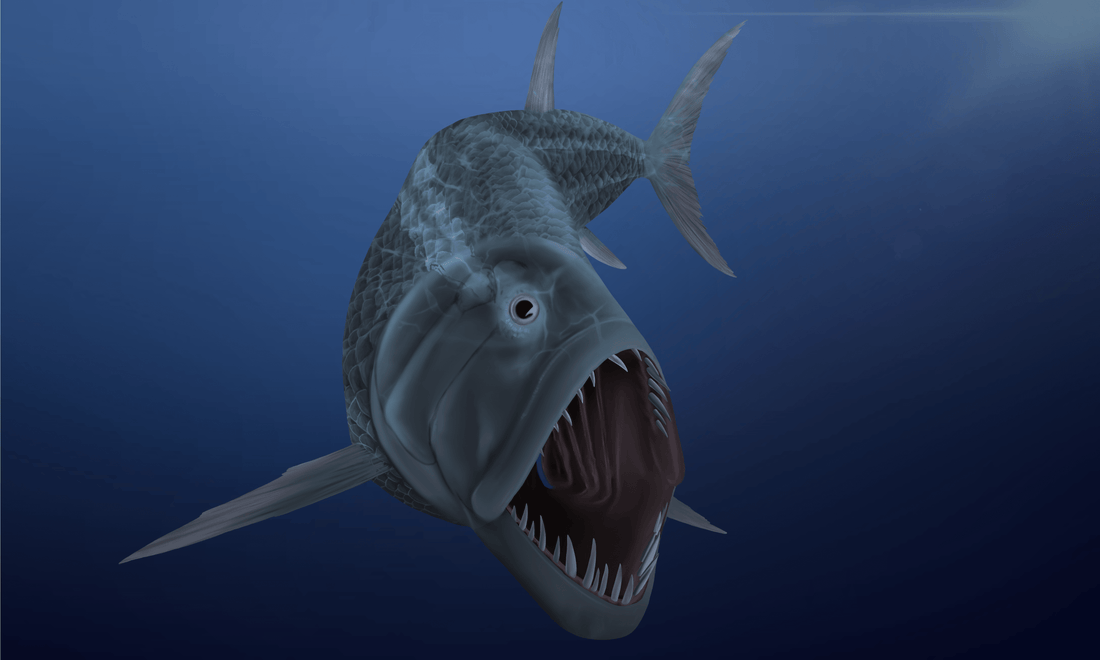
Xiphactinus audax, the largest predatory bony fish, was warm-blooded
Share

The Xiphactinus tooth offered by Fossil Crates (check it out here) was excavated in Kansas. It came from the very front of the mouth is one of the largest Xiphactinus teeth ever discovered.
Xiphactinus may have been endothermic, meaning it could generate its own heat. When we think of endothermy most think of birds and mammals, the "warm-blooded" animals that maintain their body temperature in a narrow range of degrees independent of the outside temperature. However, some fish are also able to regulate, to a certain degree, their body temperature. Ferrón in 2019 published a paper in the Journal of Vertebrate Paleontology (click here to see part of it) where he built upon previous work that accurately predict if a living fish is endothermic based on three variables: "costs of locomotion", "actual temperature range of the water", and "routine metabolic rates." His research demonstrated a strong correlation with body mass and metabolism that, once water temperature was added to the analysis, accurately predicted which current fish would be endothermic (tuna, swordfish, opah, and some sharks). These equations have been previously applied to the fossil record and strongly suggest Cretoxyrhina and C. megalodon, both giant sharks, were endothermic to various degrees, as were mosasaurs like the giant Tylosaurus. Ferrón's 2019 analysis looked specifically at Xiphactinus and he concluded that it, too, was endothermic, making it the oldest bony fish to possess endothermy.
What I find fascinating is Cretoxyrhina, Tylosaurus, and Xiphactinus all lived in the same Western Interior Seaway at the same time. Having three apex predators co-exist is extremely rare. Evidence that each fed on the other exists as parts and pieces of each genus have been found in the stomach contents of the other genera, in fact, one Xiphactinus was found with a mosasaurid flipper in its mouth! It is no coincidence that endothermy developed among theses three phylogenetically very different super-predators of their time. Endothermy evolved independently in these marine reptiles, bony fish, and sharks because it was of huge value for survival and reproduction. The advantages of endothermy's "instant-on" capability, meaning the ability to eat prey at a moment's notice and to flee larger predators, is itself energy-intensive. Regulating body temperature requires continuous eating, which then accelerates predator-prey evolution, creating a feedback loop that, in these seas, resulted in ever-larger, ever faster, ever-more-powerful predators, and ever more elusive prey.
At the end of the Cretaceous, in an ocean covering the middle of the United States, an evolutionary arms race resulted in three of the largest, most powerful aquatic animals that ever lived contesting with one another. I can't imagine a more scary ocean... unless one invokes Carcharocles megalodon!
Thank you kindly!
BC
My synopsis stems from this article that I just read (even though it says 2019 I didn't receive it until 8/13 of 2020!): Humberto G. Ferrón (2019) Evidence of endothermy in the extinct macropredatory osteichthyan Xiphactinus audax (Teleostei, Ichthyodectiformes), Journal of Vertebrate Paleontology, 39:6, DOI: 10.1080/02724634.2019.1724123